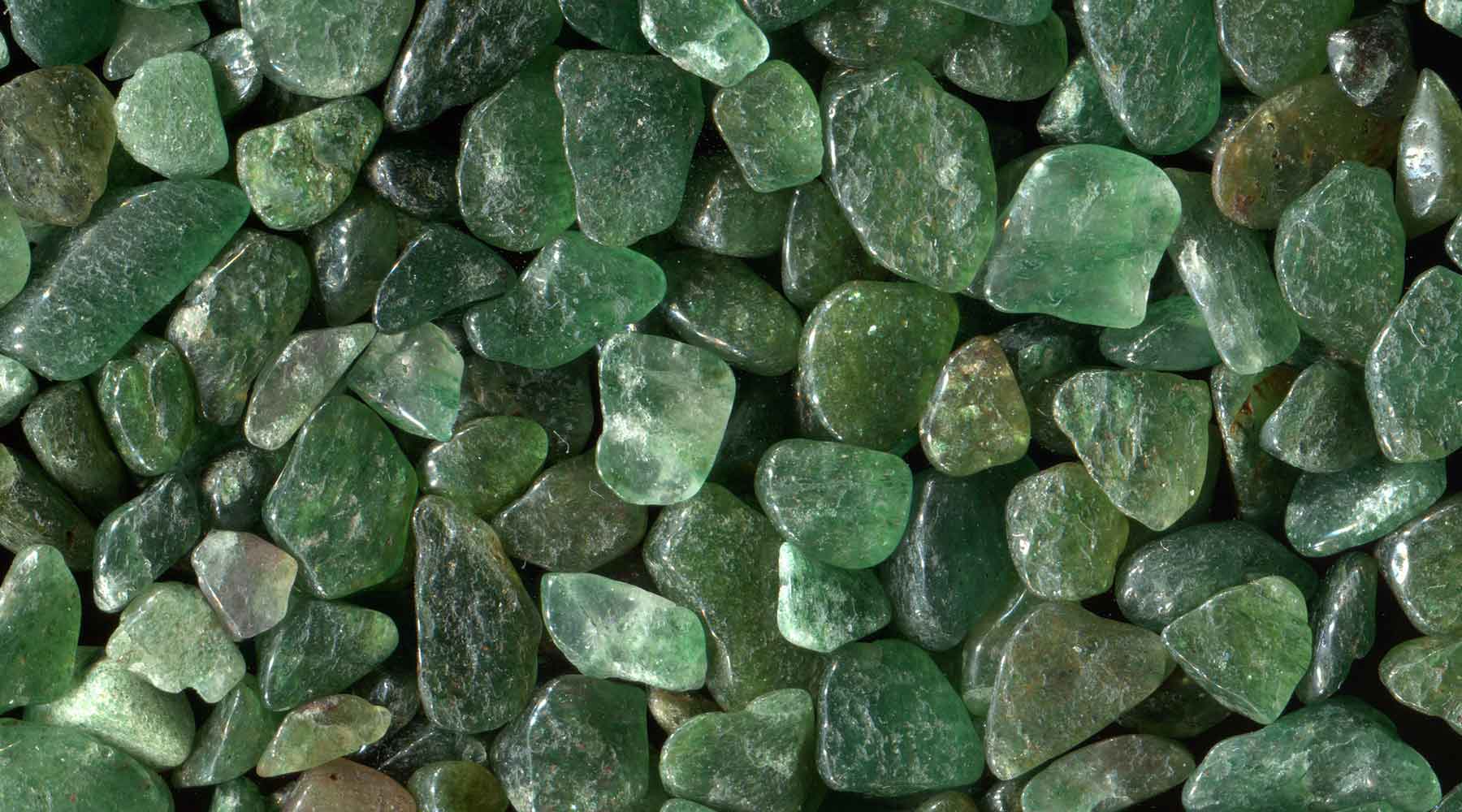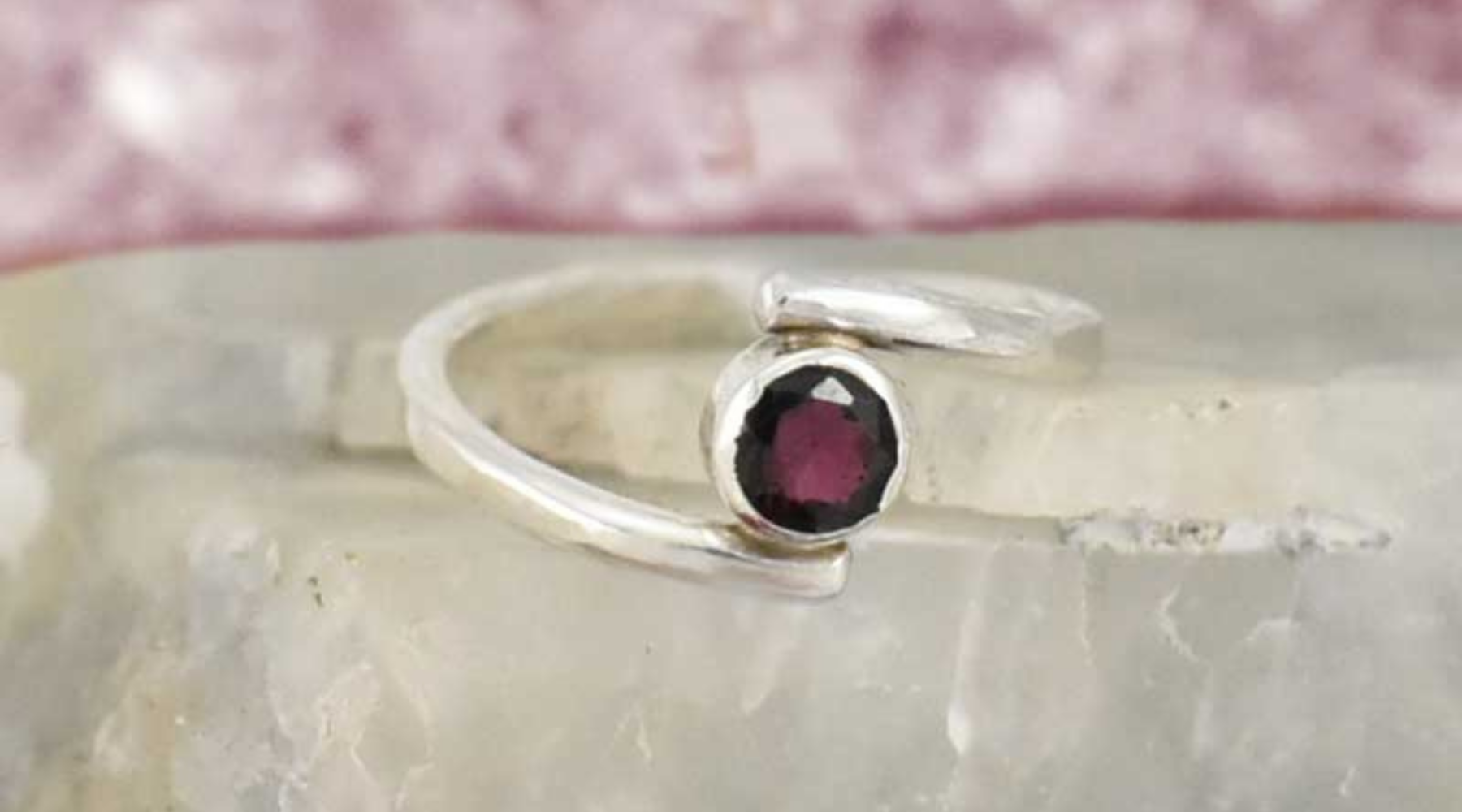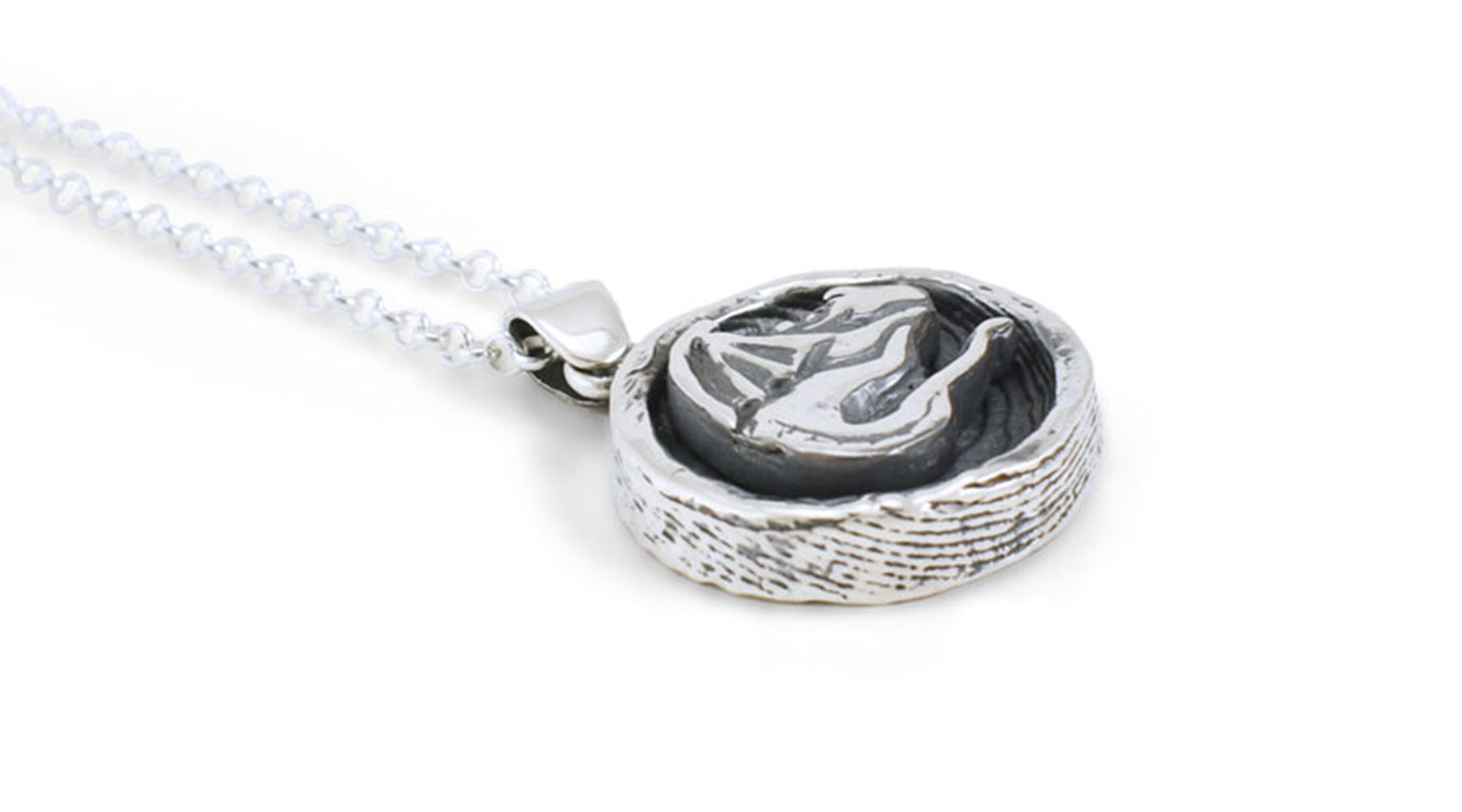
So… What is Aventurine?
In a nutshell, Aventurine is a type of crystalline quartz. In fact, it’s often referred to as aventurine quartz, to help distinguish it from other gemstones (and glass) that look similar.
Is it green quartz? Yes and no.
Aventurine is green and it’s a quartz, but it’s not called green quartz. True green quartz does not have the inclusions and shine of aventurine, plus it’s fairly rare.
Aventurine, or aventurine quartz, belongs to the same crystal family as amethyst, blue quartz, green quartz, and citrine. What sets it apart from its relatives, is the presence of small internal flakes of mica or hematite that reflect light, causing it to shimmer or glisten. This effect is called aventurescence.
On the gemstone harness scale, aventurine comes in around 6.5 to 7, meaning that its durable enough to withstand being worn in jewellery but will be scratched by harder gemstones, such as sapphires, rubies or diamonds.
Why is Aventurine Green?
For starters, not all aventurine is green, though that is the most common - and prized - colour. Aventurine can also be found in a natural orange, blue, brown, yellow or gray.
It’s the small flaky inclusions that determine the colour of aventurine. The classic inclusion being chrome-bearing fuchsite – a variety of muscovite mica – which gives aventurine a silvery green or blue sheen. Even just a small percentage of these inclusions can give aventurine a distinct green colour, and/ or cause banding of various shades of green, while too much fuchsite may cause the gemstone to go from translucent to opaque.

Pictured Above: Rough green aventurine quartz
How was Aventurine discovered?
It is uncertain how the gemstone aventurine was actually discovered. It’s been in used in jewellery throughout human history. In the British Museum, there is a ceremonial axe from Mexico that is made of aventurine quartz and dates back to roughly 1200 t o1400 BCE.
We do know how aventurine got its name though…
Around 1700, a glass called ‘a ventura’ was accidentally discovered, and lent its name to the gemstone due to the similarity in their appearance. This aventurine glass, now known as Goldstone, glitters in a manner similar to the gemstone, and, like the gemstone, can be carved, polished and used in jewellery. To avoid confusion, the gemstone is often referred to as aventurine quartz.
Where is aventurine found?
Aventurine quartz is found all over the world. India is where the majority of the green and blue-green aventurine is found, and is the biggest commercial producer of aventurine, with Brazil coming in second, and Russia, Spain, Austria, and Tanzania producing smaller amounts. Chile, Spain and Russia are where cream white, gray and orange aventurine is found.
A case of mistaken identity…
Aventurine is sometimes confused for green quartz, but as we discussed earlier, true green quartz is rare and lacks aventurescence.
Other gemstones aventurine can be confused with are:
◦ Malachite – sometimes the amount of fuchsite in aventurine causes it to become opaque, colour banded and look similar to malachite. Malachite is much softer than aventurine quartz though.
◦ Jade – Aventurine is similar in colour to jade, but jade is in its own family of gemstones, with a different chemical composition. Plus, jade never exhibits aventurescence.
◦ Sunstone – While this gemstone is not green, it contains hematite or copper inclusions that create an aventurescent sheen on the gemstone. Also, sunstone is sometimes called aventurine feldspar, but it has a different chemical composition to aventurine quartz.
How is aventurine used?
Green aventurine is the most popular colour, and is seen as a less expensive alternative for jade and amazonite. It’s commonly used in beads, and formed into cabochons for jewellery. Aventurine is occasionally used to make bowls, vases, and small sculptures.
Other colours of aventurine are used in this way too, but finding nice quality aventurine in those colours isn’t common.
Pictured Above: Green Aventurine Quartz inlaid into sterling silver frames to make enchanting earrings. Click here to shop
How to care for aventurine jewellery
As we touched on earlier, aventurine can be scratched by harder stones – and can scratch stones that are softer than it – so it’s best to store each piece of jewellery separately to avoid accidental (and unnecessary) damage.
Should your aventurine jewellery get dirty, the best way to clean it is with a soft make-up type brush and luke warm soapy water. It’s important to not submerge or soak your aventurine in the water, and to dry it quickly when you’re finished.
Aventurine does not do well with prolonged exposure to water, especially salt water. The reason for this is that the mineral inclusions within aventurine can dissolve or otherwise chemically react with the water. In extreme cases, this can cause the colour of the aventurine to change – and usually not for the better – or form pits and cracks in the gemstone.
For this reason, it’s best to take your aventurine jewellery off when showering, swimming, etc.
Also, do not leave your aventurine jewellery in the sun!
Like many other quartzes in its family, prolonged exposure to sunlight will cause aventurine to fade and possibly lose its colour all together. This doesn’t mean that you need to worry while wearing it on a sunny day, but do not leave your aventurine jewellery in a sunny spot. It will not end well. It’s best to store aventurine in a dark place that does not experience temperature fluctuations like a jewellery box away from windows.
Never leave your gemstone jewellery in a car, either on the dashboard or the glove compartment. The extreme changes in temperature can cause bad things, like cracks, pits, and/ or colour changed to happen to your gemstone.
How to tell if aventurine is real
The best way to be sure that your aventurine jewellery is real is to purchase it from a reputable jeweller.
However, its also good to keep the following tips in mind.
Aventurine is a harder material than glass, meaning that it will scratch glass, but that’s probably not the best way to test finished jewellery. To test finished jewellery, take an old butter knife and try to scratch the aventurine. Real aventurine is harder than steel and will take no harm from the knife. Be sure to take care to avoid slipping and accidentally damaging the precious metals – the knife will scratch silver or gold.
Where to find Aventurine Jewellery
Unique, handmade aventurine jewellery can be found on our website. Inside you'll find pieces like these dazzling Long Rectangle Green Aventurine Dangle Earrings, pictured below. Click here to shop.
Aventurine is a beautiful and durable gemstone that with proper care can dazzle for many, many years and be a vibrant addition to your jewellery collection.





Leave a comment
This site is protected by hCaptcha and the hCaptcha Privacy Policy and Terms of Service apply.